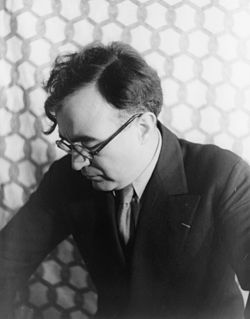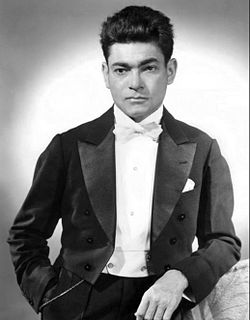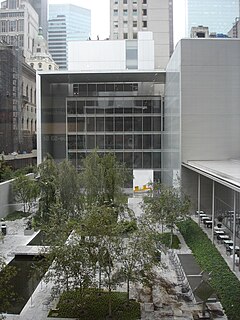
The music of Mexico is very diverse and features a wide range of musical genres and performance styles. It has been influenced by a variety of cultures, most notably the culture of the indigenous peoples of Mexico and Europe.

Silvestre Revueltas Sánchez was a Mexican composer of classical music, a violinist and a conductor.
José Pablo Moncayo García was a Mexican pianist, percussionist, music teacher, composer and conductor. "As composer, José Pablo Moncayo represents one of the most important legacies of the Mexican nationalism in art music, after Silvestre Revueltas and Carlos Chávez." He produced some of the masterworks that best symbolize the essence of the national aspirations and contradictions of Mexico in the 20th century.
Daniel Ayala Pérez was a Mexican violinist, conductor, and composer.

The National Symphony Orchestra is the most important classical music and symphonic ensemble in Mexico. With its origins traced back as 1881, it is the second-oldest symphony orchestra in the American continent along with the Boston Symphony Orchestra. The orchestra does not have a permanent venue but performs regularly in the Grand Hall of the Palace of Fine Arts in Mexico City.
Malagueña Salerosa — also known as La Malagueña — is a well-known Son Huasteco or Huapango song from Mexico, which has been covered more than 200 times by recording artists.

The Conservatorio Nacional de Música is a music conservatory located in the Polanco neighborhood of Mexico City, Federal District, Mexico.
"El Son de la Negra" is a Mexican folk song, originally from Tepic, Nayarit, best known from an adaptation by Jaliscian musical composer Blas Galindo in 1940 for his suite Sones de mariachi.
Juan Trigos is a Mexican-American composer and conductor, with a career of over 25 years.
Flores Chaviano is an accomplished Cuban composer, guitarist, professor and orchestral conductor that has achieved great international recognition.

Sinfonía india is Carlos Chávez's Symphony No. 2, composed in 1935–36. In a single movement, its sections nevertheless follow the traditional pattern for a three-movement symphony. The title signifies the fact that the thematic material consists of three melodies originating from native-American tribes of northern Mexico. The symphony is Chávez's most popular composition.

Symphony No. 5, also called Sinfonía para cuerdas is a composition for string orchestra by Carlos Chávez, composed in 1953.
Efraín Amador Piñero is a Cuban guitarist, lutist, composer and professor. He has conducted extensive investigations about the “Cuban lute” and “tres” performance styles, and has created several methods of study and numerous compositions for those instruments.

Janitzio is a symphonic poem by the Mexican composer Silvestre Revueltas, composed in 1933 and revised in 1936. A performance lasts about fifteen minutes. The work is a portrait of Janitzio Island in Lake Pátzcuaro, Mexico.
Salvador Contreras Sánchez was a Mexican composer and violinist, a member of the Grupo de los cuatro.
The Mexico City Philharmonic Orchestra — Orquesta Filarmónica de la Ciudad de México — is an orchestra of international rank founded and underwritten by the National Government of Mexico. The home venue is the Ollín Yoliztli Cultural Center (es) in Tlalpan, Mexico City, which opened in 1979.

Cuauhnáhuac is an orchestral composition by the Mexican composer Silvestre Revueltas. It exists in three versions, the first for string orchestra, the other two for full orchestra with winds and percussion. The first version takes nearly 15 minutes to perform, while the third lasts only about 11 minutes.

Carlo Curti, also known as Carlos Curti, was an Italian musician and bandleader. He moved to the United States whose most lasting contribution to American society was popularizing the mandolin in American music by starting a national "grass-roots mandolin orchestra craze".

Xochipilli, subtitled "An Imagined Aztec Music", is a short composition for four wind instruments and six percussionists by the Mexican composer Carlos Chávez, written in 1940. Its original title was Xochipilli-Macuilxóchitl, which is the double name of an Aztec god in two of his aspects, meaning "Flower Prince" and "Five Flower".










